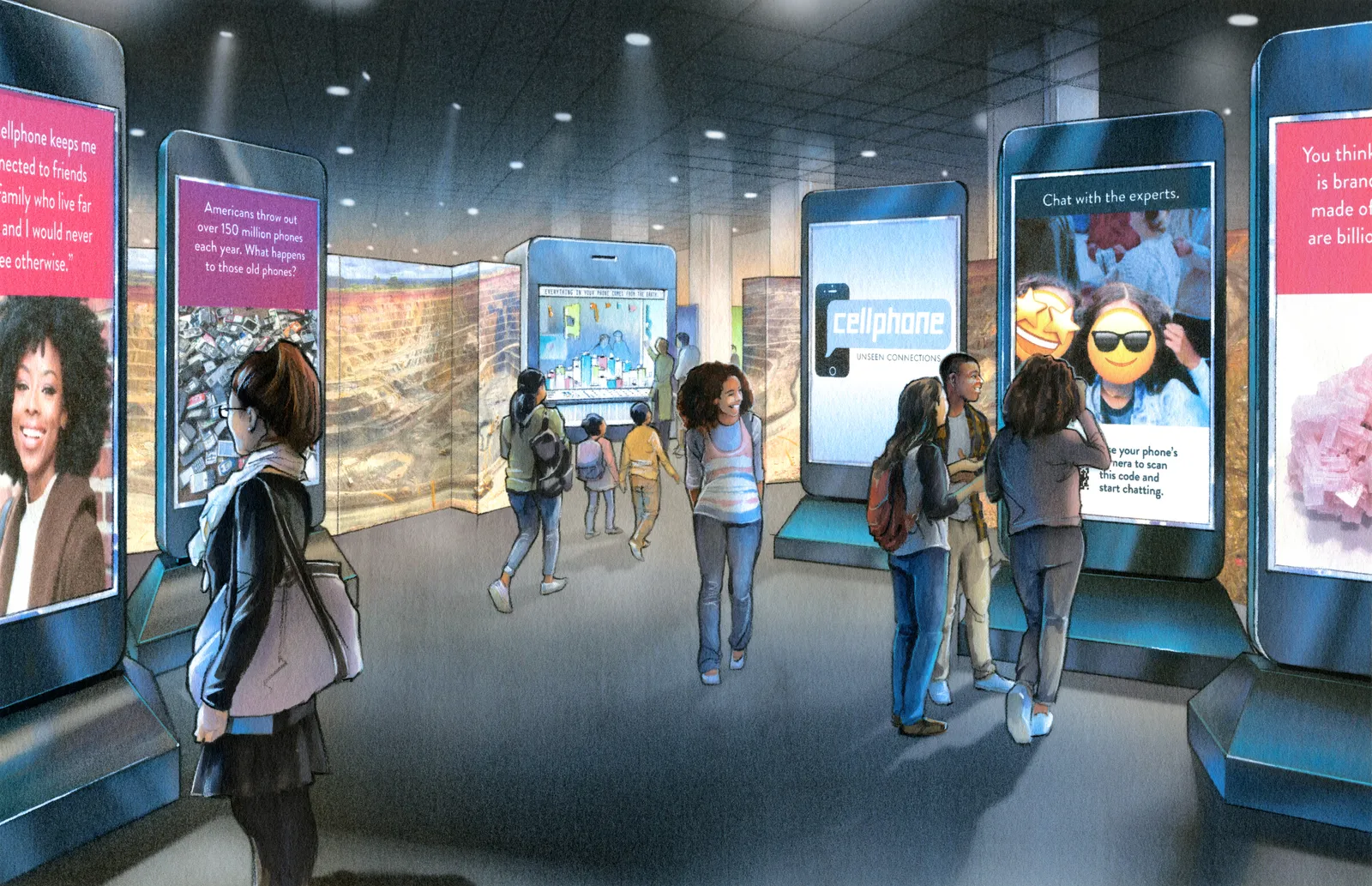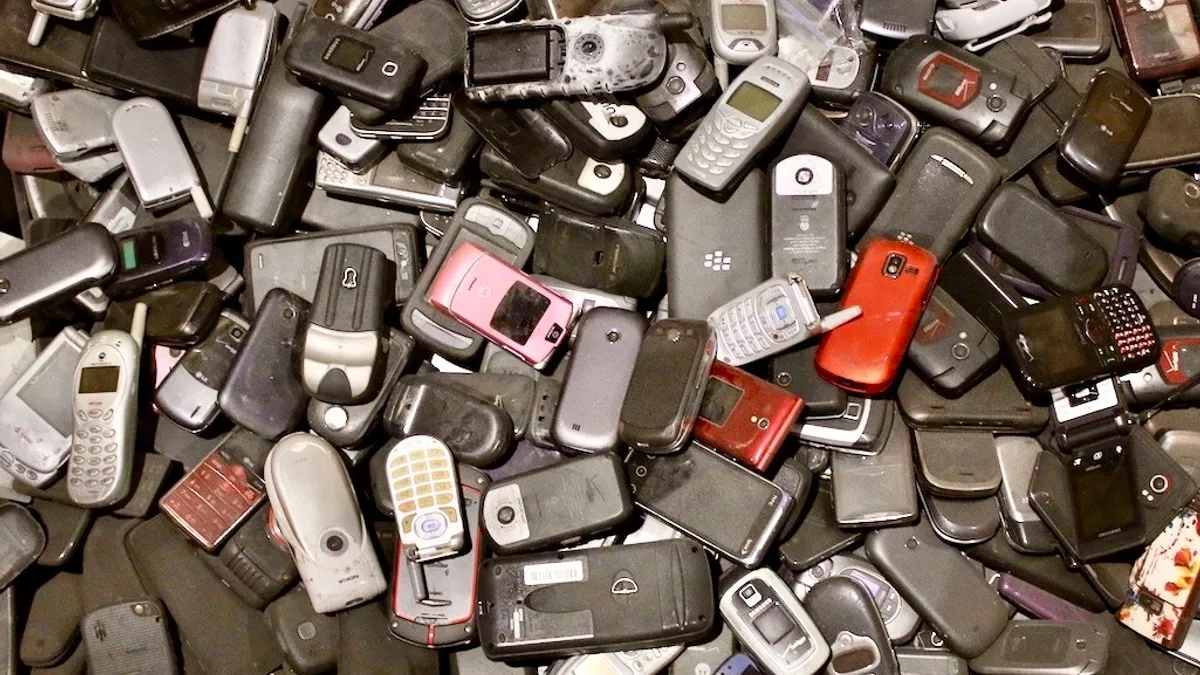Electronics recycler Sunnking is used to spreading the word about recycling by hosting community electronics takeback events in New York. Now the company hopes a new exhibit at the Smithsonian’s National Museum of Natural History in Washington, D.C., will highlight the conversation in another, more unconventional setting.
Sunnking lent nearly 300 old cellphones to the new exhibit, “Cellphone: Unseen Connections,” which aims to show the technology, culture and natural resources behind devices most humans use each day. Visitors to the exhibit can see phone case art from Indigenous creators, displays of minerals used to make phones functional and even a full-size coffin shaped like a cellphone. The exhibit highlights recycling and repair aspects through an interactive repair game and a section on responsible electronics disposal.
“When people replace their phone, sometimes they just throw the old one in the desk drawer, not really knowing what to do with it,” said Adam Shine, the company’s president. “They don't realize that there is some potential value there in terms of the recyclability, and certainly it's good for the environment.”
Sunnking typically handles about 50,000 non-smartphones a year, with many of the “old style” models coming from community takeback events it organizes. It handles another 150,000 to 200,000 smartphones a year, many of which come from commercial customers that regularly replace their employees’ phones. Most of those phones are refurbished, but some are also recycled for scrap.
Shine sees the company’s inclusion in the exhibit as a way to discuss the importance of electronics recycling on a national scale. Lack of access to secure electronics drop-offs, or limited education or awareness of how people can recycle cellphones, are big hurdles that Shine says keep people from getting old electronics out of their houses and back into the circular economy.
“I think education is still the biggest barrier to what we do,” he said. New York recently made changes to the state law that requires manufacturers to provide free and convenient electronics recycling, so Sunnking and other recyclers are now required to do more public service announcements and work more closely with municipalities to disseminate information ahead of certain recycling-related events.
Shine said he’s dreaming up other new ways to get people excited to recycle electronics, including offering a possible monthly curbside collection service that would provide lockable totes to keep discarded phones and other devices secure until pickup. Fitting that idea into Sunnking’s business model could be tricky, since the state’s electronics extended producer responsibility law prevents recyclers from charging for certain electronics recycling services, he said.

Repair and refurbishment is another element of the Smithsonian exhibit. The museum touted a cell phone repair demo as part of its opening night event. The exhibit’s lead curator, cultural anthropologist Joshua Bell, has studied how cell phone repair technicians gain the knowledge needed to fix devices, including in places with limited access to repair manuals or parts. He also studied the relationships technicians build with customers. “This technology is an intimate part of what being human is,” he said in an interview with Smithsonian Magazine.
New York recently passed a right-to-repair law requiring original equipment manufacturers to make repair information and tools for certain electronic devices, such as cell phones and laptops, available to the public. Minnesota also recently passed a similar law, and California lawmakers are mulling another.
Shine said the law will likely have positive environmental impacts by allowing people to extend the life of their phones, but he worries that repairs done outside of businesses with trained technicians could cause injuries from damaged lithium-ion batteries.
However, Shine also thinks general access to repairs and recycling options is getting slightly better around the country, and he hopes the public can become inspired to seek out recycling options and see cell phones in a new light after visiting the museum.
These devices “have value to us. Sometimes losing our phone could be worse than losing our wallet,” he said. “But there’s also value to us when we’re done using them.”















